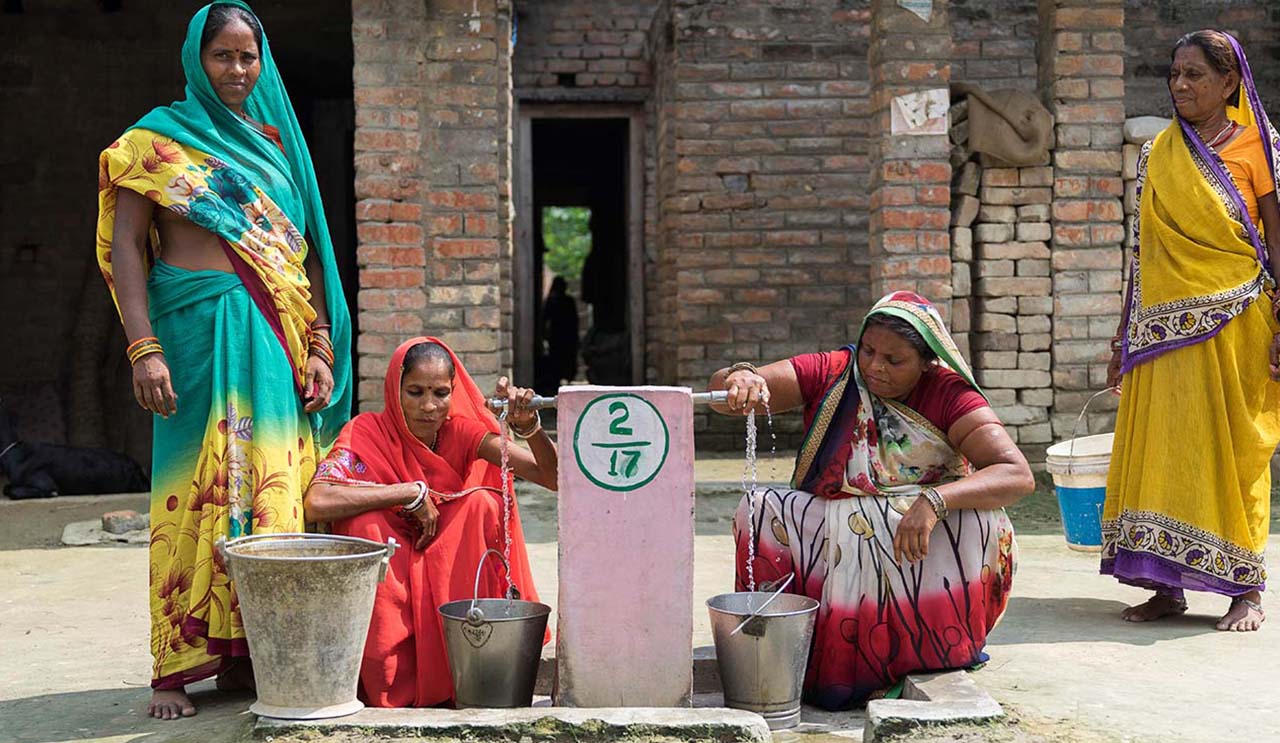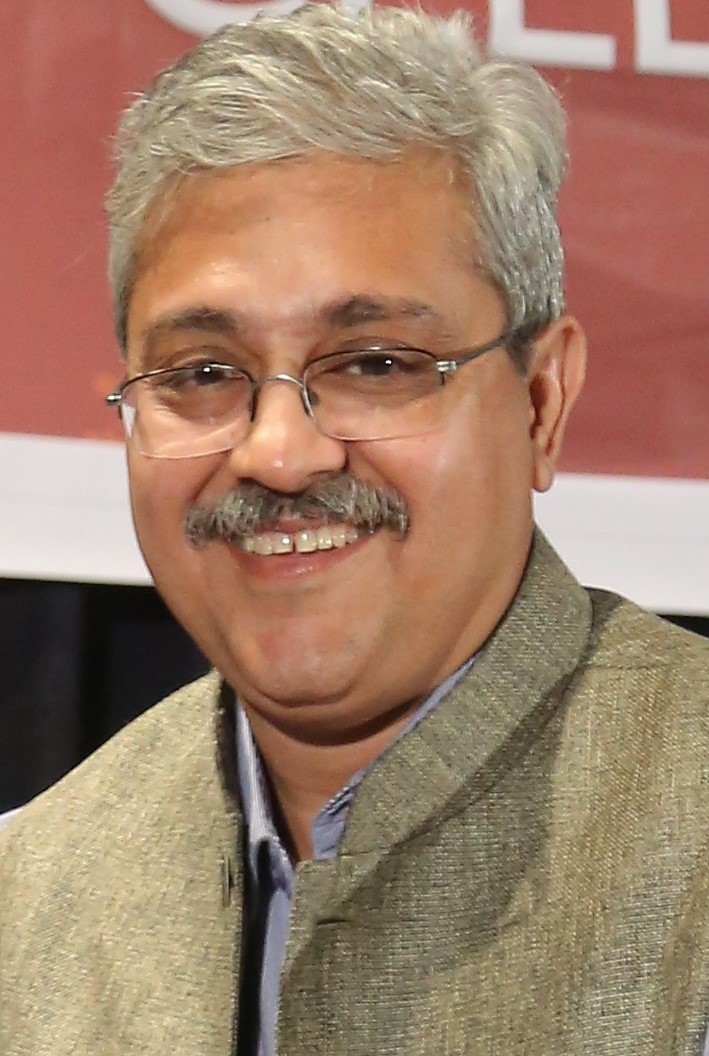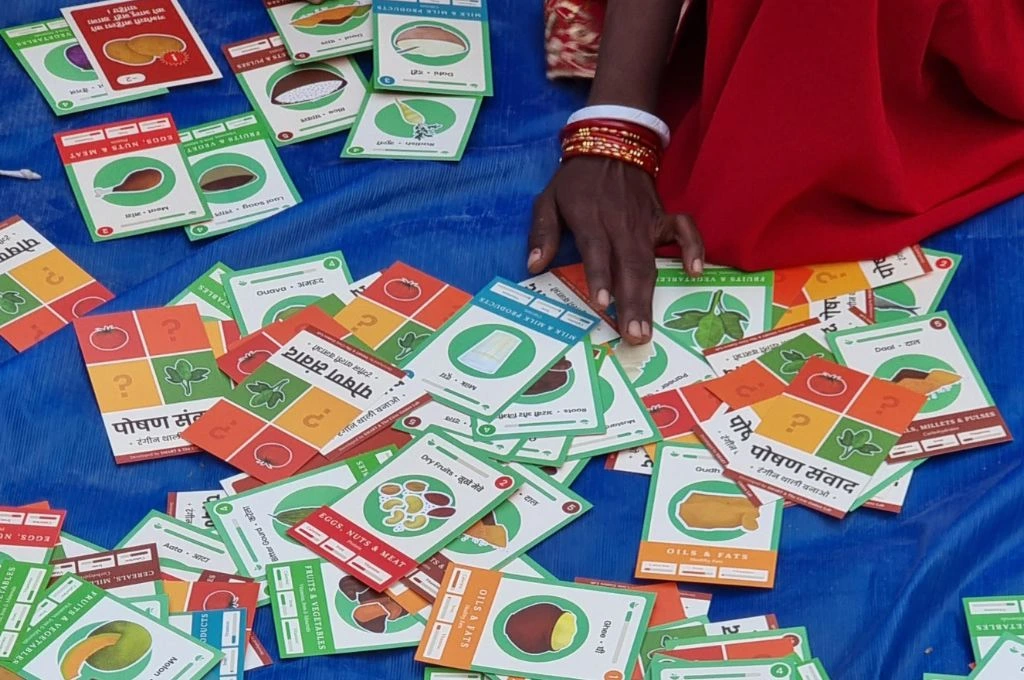People hear the word civil society and react differently; and it depends on where they come from. For the business leader, social and environmental concerns are impediments to business. “Environment ke liye poora project band hojata hai, what about growth, what about the economy?” (Entire projects have to be shut down for the sake of the environment).
I’ve also been in conversations with some government officers who say, “woh kaam chhota karte hain aur credit bahut le lete hain. Kaam toh hum karte hain paisa toh hamara hai.” (The nonprofits hardly do any work but take all the credit. We are the ones who do the work, the ones who put in the money).
But nothing is farther from the truth. When we look at rural India, and look at some of the things we take for granted today—be it women self-help groups (SHGs), ASHA workers, biogas plants, RTI applications, and so on—there is a common thread to all of them. Every single one. They all originated as innovations in civil society.

Our largest government programmes were born in civil society
One of the largest programmes of the government—the National Rural Livelihood Mission (NRLM)—is based on women self help groups (SHGs). And the concept of an SHG was developed by Aloysius Fernandes and his team at MYRADA.
In the 1970s, MYRADA was working with large primary agriculture cooperative societies (PACS), all of whom seemed to be failing. In some of the geographies however, while the cooperatives had collapsed, there were some villages where small groups were saving and giving credit to each other.
Aloysius and the MYRADA team saw this, identified them as empowered groups that the banks could lend to, gave it form and structure, and took it to NABARD.
NABARD realised the value of what MYRADA was helping build, because they themselves were trying to reach out to the poor and their existing institutional portfolio was failing because the cooperatives weren’t functioning. They supported MYRADA and then pushed the banks to lend to these groups of poor women who saved regularly.
So, in a sense the SHG movement was started by MYRADA and to some extent, NABARD. The state was not in the picture at that time.

Then the first SERP programme came up in Andhra Pradesh. They used the base created by NABARD and MYRADA and they promoted the SHGs. And because the SERP programme worked, and because the World Bank was funding SERP, when the government created the NRLM, they used the same principles and structures.
If there hadn’t been MYRADA, we probably wouldn’t have had NRLM today.
Today the NRLM, which rides almost entirely on the SHG infrastructure, is the only large-scale institutional arrangement that the government has to reach out to poor. Every government uses it, regardless of what end of the political spectrum they occupy. It is pro-poor and still has elements of the market—the state can extend its entitlements directly to the people, while also enabling them to be self-reliant by promoting enterprises. But if there hadn’t been MYRADA, we probably wouldn’t have had NRLM today.
India’s most talked about government programme MGNREGA came about because Jean Drèze and others in civil society drafted it, and advocated for it.
The idea of MGNREGA did borrow from an earlier employment guarantee programme that was started in Maharashtra by Mr Vitthal Sakharam Page—chair of the Maharashtra State Legislative Council, and a social activist—who wrote the first draft in 1965. But it was only when several civil society activists fought for it in the early 2000s, that it became something that the Central government took seriously and passed into national law.
The early work around watershed management was done in Sukhomajri in Haryana. A more integrated approach was later piloted at Ralegan Siddhi by Anna Hazare. This, and the Hiware Bazar model by Popatrao Pawar became models to emulate, and the IWMP guidelines that are in place today are a result of contributions from many nonprofits.
These are just few examples but the story repeats itself again and again regardless of the sector. Consider these two others examples; one old and one relatively recent:
- ASHA workers: The concept of ASHA workers was born in Jamkhed. The Aroles—Dr Mabelle and Dr Raj—started a programme in 1970 which involved semi-literate women delivering home-based care to mothers and newborns. It was taken to scale by the government, and our country now has over six lakh ASHA workers.
- 108 Service: The 108 service that everyone lauds as a model of efficiency and scale was started as a service by EMRI—a nonprofit in Andhra Pradesh under the aegis of Satyam Foundation (EMRI was later taken over by the GVK Foundation). It was handed over to the Andhra Pradesh government, and later, other state governments implemented it. Today it runs across 15 states and two union territories.
We are seeing a marginalisation of the civil society sector by markets and the government because we haven’t told our story well enough.
The list continues—handpumps, participatory rural appraisals, wadi programmes, and so on. Essentially, almost any government programme worth its salt came from an innovation or technology developed by civil society. This is not to belittle the role of the state, which is by far the major development actor, but to emphasise the role of civil society in nation building.
Despite this, we are seeing a marginalisation of the civil society sector by markets and the government because we haven’t told our story well enough.

Handpumps, participatory rural appraisals, wadi programmes, and so on, all came from an innovation or technology developed by civil society | Picture courtesy: Aga Khan Rural Support Programme (India)
Civil society is too self-effacing
What is the philosophy of a civil society? We believe that we will develop solutions which over time the community will own and the state or market will support. When that happens, we believe our work is done.
In a way, it’s a very phoenix-like approach—you create and you disband. And you start all over again on some other problem. We don’t patent anything; we don’t take credit for anything.
We don’t even acknowledge our role in the change; in fact, we undermine it.
And perhaps this is because we know that something as complex as social change requires the contribution of many people—communities, grassroots organisations, the state, funders, and so on. But we have gone to the other extreme. We don’t even acknowledge our role in the change; in fact, we undermine it.
When people ask us if we have successfully run a programme, we say “Nahi humne toh kuch kiya nahi hai, ye toh sab gaonwalon ne kiya hai” (No, we didn’t do anything, it was the villagers who did everything). And while it might be politically correct to say that we are only the catalysts, and the real work is done the community; it’s not always an accurate representation.
Civil society is more than the catalyst; we are innovators—technical innovators and idea innovators. We take really complex problems and come up with new ways to address them. We do effective work but refuse to take credit for it. And our refusal to take credit only feeds into the government’s view point—if the community is doing everything and civil society isn’t doing anything, then we will deal with the community directly.
People don’t understand our unique proposition
Because we have undermined ourselves, our unique proposition is not known. Our value to society is not only what we do or how we do it, but also at what cost we do what we do.
Many of us work at ridiculously low costs but we don’t document it, and we don’t measure it. So, some corporates, who want to work on social programmes, believe that they don’t need nonprofits. All they have to do is take the nonprofit’s staff and implement it on their own because it seems easy and cheap to do so.
Running a programme is complex. It takes years to build trust. And it requires humility, rigour, and persistence.
The reality is different. Running a programme is complex. It takes years to build trust. And it requires humility, rigour, and persistence. It requires training, all-weather support, and hand-holding—all things that lead to an enabling ecosystem that a good nonprofit creates.
But some corporates don’t know this; they just want to take on the programmes because they believe they can do it better on their own rather than share space with nonprofits. It’s we who are at fault because we allowed this to happen.
The assumption is that nonprofits cannot scale
Scale is the new measure of ‘success’, where others find civil society wanting. Small, local and specialised civil society organisations are disappearing, and are not considered relevant in this new India which is in a hurry.
If one studies what has worked in the past, one realises that many, relatively small organisations have transformed the country. Consider MKSS, which started its work in a small village in Rajasthan, and even at its peak, worked largely in Rajasthan for the citizens’ right to information. That the RTI Act eventually became one of the most effective legislations by the state to hold itself accountable to its citizens, is a story of how impact is not necessarily a function of size.
We are trying to transform the conditions in which human beings live. This is dramatically different from creating a market for one small need of an individual.
We are constantly told by corporates and governments that we can’t scale. But then I reflect on what is it that a large corporate that has scaled typically does? They pick one slice of a human being’s life, for instance, the fact that people might like to drink cold sweet water in summer. It is one need—one would think a very unhealthy need but nevertheless a need. And then a multi-billion-dollar soft drink industry gets created around this need. You serve nothing; in fact, you take a poor man’s good water and convert it into this sweet water and charge him INR 20 for it. That is your net value addition to society. So that is all you know. To understand one very small slice of a human being’s need and address it.
Now compare that to what civil society is trying to do. We are trying to transform the conditions in which human beings live. This is dramatically different from creating a market for one small need of an individual.
It’s easy to scale a product that is uni-dimensional, but can you do it when it involves changing entrenched social norms?
It’s easy to scale a product that is uni-dimensional, serves a very specific micro-need, to which you can throw a ton of resources—money, talent, technology. But can you do it when it involves changing entrenched social norms across all aspects of a person’s life and livelihood?
The problem is while we in the sector might know how to do some of this, we don’t know how to articulate it and how to measure it.
And because we haven’t articulated it, we cannot argue for resources, for space, for anything really.
Even if the state hasn’t failed, we will always need civil society
Civil society is that critical third pillar of the samaj-sarkar-bazaar (society-government-market) triangle. Without it, no society can function. Even in most successful countries across the world there will always be people who are marginalised, and issues that are not on government or company radars.
There will always be a human problem which the market will never take up and the state will not realise either, because it is too buried, or too out there in the future. Even in its best form, the government is not designed to look at these things. And countries that have a majoritarian democracy will ignore those who are not a part of their majority. It’s a design problem.
So, who will look out for these people, who will help change entrenched social norms, who will build awareness of issues that matter?




